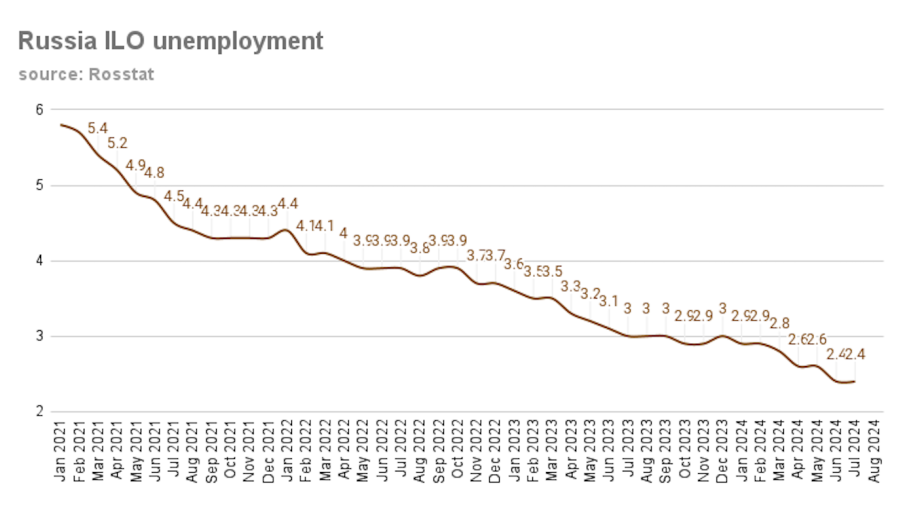In a labor market that many have hailed as "solid," recent data reveals troubling undercurrents that challenge this narrative. A new jobs report suggests that while the unemployment rate remains relatively low at 4.25%, a significant factor in this statistic may be the sharp decline in labor force participation. According to economist Parker Ross, without this decrease, unemployment could have surged to 4.9%. This revelation has sparked renewed debate among analysts and policymakers about the true state of the labor market.
Background & Context
Labor force participation is a critical measure of economic health, indicating the percentage of the working-age population that is either employed or actively seeking employment. In recent months, this figure has seen a worrying decline, prompting concerns that the low unemployment rate may not accurately reflect the overall economic landscape. Since April, the participation rate has been plummeting, leading some experts to question whether the labor market is as robust as it appears. The disconnect between low unemployment and declining participation raises important questions about workforce dynamics and economic recovery post-pandemic.
The implications of a shrinking labor force are profound. As fewer individuals engage in the job market, the potential for economic growth diminishes. This trend not only affects immediate job availability but also has long-term repercussions on productivity and wage growth. Economists are now tasked with unraveling the factors contributing to this labor force contraction, which could include demographic shifts, changes in worker attitudes, and the lasting impacts of the COVID-19 pandemic.
Key Developments
The latest jobs report, released by the Bureau of Labor Statistics, showcases a complex picture. While 263,000 jobs were added in September, the decline in labor force participation is a stark reminder that not all is well in the economy. Parker Ross"s analysis highlights that the unemployment rate, often touted as a sign of a healthy job market, may be misleading. "If not for collapsing labor force participation since April, unemployment would"ve climbed to 4.9% today instead of 4.25%," he stated, emphasizing the need for a deeper understanding of workforce trends.
This sentiment was echoed by various economists who stress that the unemployment rate alone cannot serve as a reliable indicator of economic health. Instead, they advocate for a more nuanced approach that includes labor force participation rates, wage growth, and job quality. As previously reported, factors such as inflation, the rise of remote work, and changes in the gig economy are influencing how individuals view employment and job-seeking behavior.
\n\n
Image for Jobs Report Reveals Hidden Crisis: Unemployment Masked by Plummeting Labor Force Participation
Broader Impact
The decline in labor force participation has broad economic implications. For one, it signals a potential skills mismatch in the workforce, where available jobs do not align with the skills of those seeking employment. This gap may lead to increased wage pressures as employers compete for a smaller pool of qualified candidates. Additionally, a shrinking labor force could hinder economic recovery, particularly in sectors that are already struggling to find workers.
Experts warn that this trend could exacerbate inequality in the job market. As companies increasingly seek skilled workers, those without the necessary qualifications may find themselves at a disadvantage, further widening the gap between different socioeconomic groups. Historical comparisons reveal that labor market participation rates have fluctuated significantly due to economic downturns, but the current situation poses unique challenges that require targeted policy responses.
What"s Next
Going forward, economists and policymakers must focus on strategies to boost labor force participation. This could involve enhancing workforce training programs, providing incentives for companies to hire underrepresented groups, and addressing barriers that prevent individuals from entering the job market, such as childcare costs or transportation issues. As the labor market continues to evolve, attention to these factors will be critical in ensuring a balanced and inclusive recovery.
Moreover, the ongoing debate surrounding labor force dynamics will likely influence future economic policies. The Biden administration may need to reassess its approach to labor market interventions, taking into account the complexities highlighted by experts like Parker Ross. As the economy grapples with these challenges, stakeholders must remain vigilant in monitoring trends and crafting responsive strategies to foster a more inclusive employment landscape.

Image for Jobs Report Reveals Hidden Crisis: Unemployment Masked by Plummeting Labor Force Participation







![[Video] Vladimir Putin delivers speech in military uniform](/_next/image?url=%2Fapi%2Fimage%2Fthumbnails%2Fthumbnail-1764621642413-vh08a-thumbnail.jpg&w=3840&q=75)